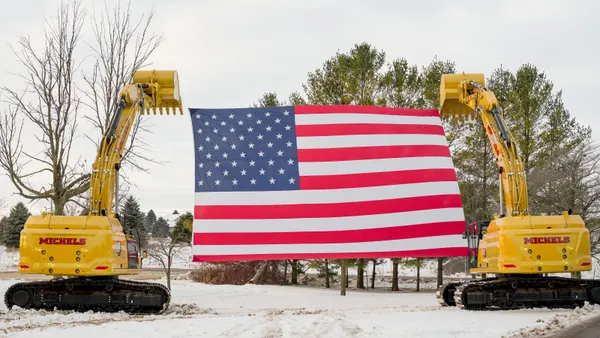Dive Brief:
-
The U.S. House Subcommittee on Higher Education and Workforce Development heard testimony this week from individuals and groups on the topic of apprenticeship programs.
-
Among those testifying was Michael Bennett, vice president of Pittsfield, ME–based Cianbro Companies. He spoke on behalf of the Associated Builders and Contractors, calling for stronger government efforts to address the skilled-labor gap by supporting training programs that combine the interests of educational institutions and businesses.
-
Bennett also recommended establishing reciprocity among apprenticeship councils, improving and expanding credentialing options, and ensuring those programs remain flexible and are industry- and market-driven.
Dive Insight:
As construction companies work to fill the skilled labor gap, industry and government groups are pushing for more programs to help recruit and retain workers. In June, the House also voted to reauthorize the Perkins Career and Technical Education Act, allocating money to secondary schools and higher education institutions.
The bill has bipartisan support, and so if it passes in the Senate, states that want funding would be required to create training programs that address local labor needs.
The Associated General Contractors and other industry groups have long sought an overhaul of the bill, which got its last major update in 2006, to help jumpstart lagging worker pipelines. To quantify current hiring challenges, the AGC surveyed its members and found that 73% anticipated facing difficulties in finding skilled labor and yet an equal percentage had planned to add more employees this year in order to meet growing demand.
Construction groups may soon find relief, with President Donald Trump signing an executive order last month that would increase Department of Labor apprenticeship funding to $200 million per year. The effort aims to create 5 million apprenticeships in the U.S. over the next five years. While industry groups applauded the move, the order may ultimately slash money from existing DOL training programs. And some observers say they've yet to see any details on how that $200 million will be allocated.
As the industry waits to see what will come of federal investment in training programs, individual groups are taking matters into their own hands. Florida, Colorado and Washington state, among others, are expanding and updating existing apprenticeship programs to meet local and state labor needs.












